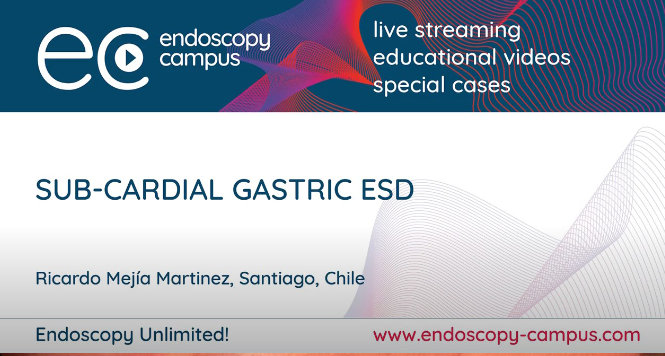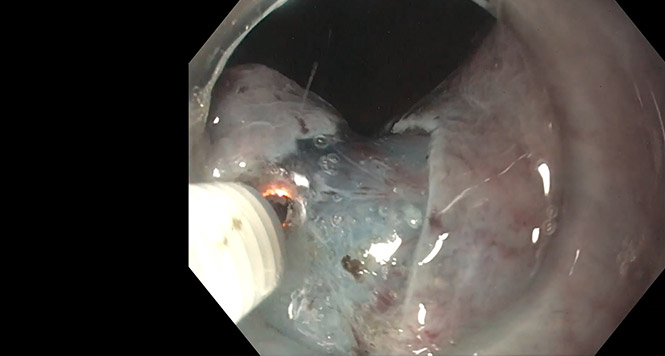Pocket Method Beats Conventional Colorectal Endoscopic Submucosal Dissection in Randomized Controlled Trial
Douglas K. Rex, MD, FASGE, reviewing Yamashina T, et al. Gastrointest Endosc 2020 Feb 28.
The conventional method (CM) of endoscopic submucosal dissection (ESD) involves creating a complete circumferential mucosal incision around the lesion, followed by use of an endoscopic knife to dissect the submucosa from one side of the lesion to the other. A drawback of the CM is that injected fluid rapidly leaks out of the submucosal space, making the submucosal dissection phase of ESD much more challenging. The pocket-creation method (PCM) involves making a mucosal incision on one side of the lesion, just large enough to provide endoscope access into the submucosal space, followed by tunneling through the submucosa under the lesion. Once the entire submucosa is dissected under the lesion in the PCM, the lesion is freed by completing the circumferential mucosal incision around the lesion. The potential advantage of the PCM is that the cushion of injected submucosal fluid is maintained, as there is less leakage of injected fluid out of the submucosa, which could improve the efficiency and safety of colorectal ESD.
In the first randomized controlled trial comparing the CM to the PCM, 114 colorectal lesions 20 to 50 mm in size were randomized at 3 Japanese centers (7 endoscopists). There were no differences between the groups in en bloc resection rates, R0 resection rates, procedure time, dissection speed, or adverse events. The ESD completion rate (defined as ESD completion in 3 hours with an en bloc resection, using only the assigned method and without perforation) was higher with the PCM (93% vs 73%; P=.01).
COMMENT
ESD is a technically challenging and time-consuming procedure. These results indicate that the increasingly popular pocket-creation method of tunneling under the lesion has an advantage over the conventional method.
Note to readers: At the time we reviewed this paper, its publisher noted that it was not in final form and that subsequent changes might be made.

Douglas K. Rex, MD, FASGE
CITATION(S)
Yamashina T, Nemoto D, Hayashi Y, et al. A prospective randomized trial comparing the pocket-creation method and conventional method of colorectal endoscopic submucosal dissection. Gastrointest Endosc 2020 Feb 28. (Epub ahead of print) (https://doi.org/10.1016/j.gie.2020.02.034)


